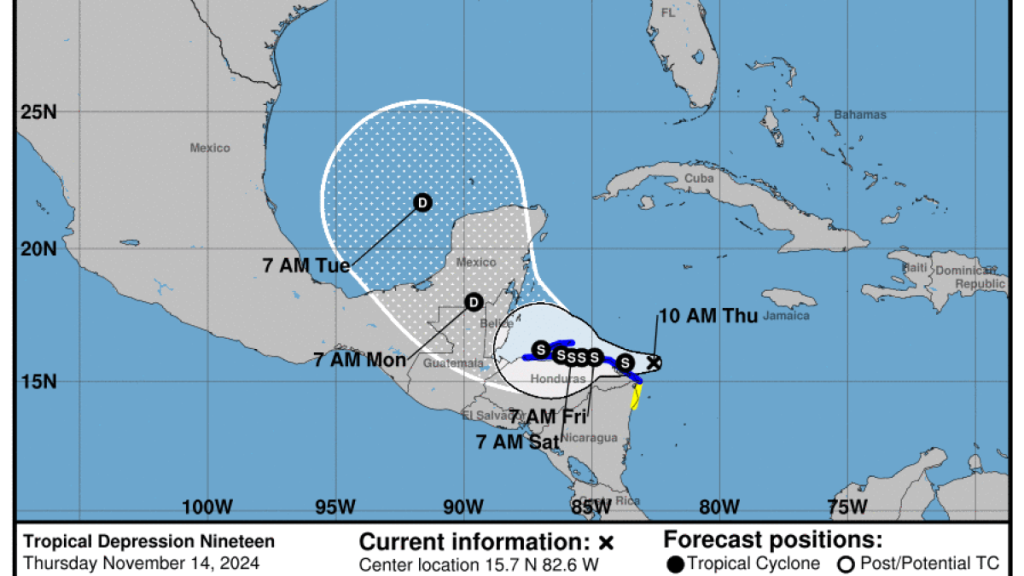A late-season storm in the Caribbean is threatening Central America with heavy rains and potential flash flooding. Tropical Storm Sara, the 19th named storm of the season, is moving towards Honduras with maximum sustained winds of 65km/h. The storm is expected to cross Mexico’s Yucatan Peninsula over the weekend before turning east and slowing over land, dumping heavy rains on flood-prone mountains and valleys in northern Honduras. The storm may also generate a storm surge along the low-lying Atlantic coast.
There is uncertainty about Sara’s path beyond Central America, but there is a possibility of a hurricane threat to Florida next week. Florida is still recovering from hurricanes Helene and Milton, which hit its west coast earlier this year. Weather experts predict that Sara may spend more time over Central America, weakening the storm and reducing the hurricane threat to the United States. The timing of a major storm this late in the hurricane season is highly unusual, with only a few occurrences of tropical storm or hurricane landfalls in the continental US after November 15.
Warmer sea temperatures and higher weather temperatures for this time of year are contributing to the unusual late-season storm activity. The Gulf of Mexico and the Caribbean have not cooled off as they typically do at this time of year, providing ample fuel for sustaining a hurricane. 2024 was predicted to be an above-average Atlantic hurricane season, with NOAA forecasting 17 to 25 named storms, including as many as 13 hurricanes and four major hurricanes. The second warmest October on record in 2024 further indicates the unusual weather patterns and increased hurricane activity.
The US National Hurricane Center has issued tropical storm warnings for Central America due to the potential for “catastrophic flash flooding and mudslides” in Honduras over the next few days. As Sara moves westwards towards Honduras, it poses a significant threat to the region, particularly flood-prone areas. The storm is expected to weaken as it crosses Mexico’s Yucatan Peninsula, but there is uncertainty about its future path, including the possibility of a landfall in Florida next week.
The late-season storm brings concerns for Central America and the United States, particularly Florida, which may face a potential hurricane threat. The rarity of such storms occurring after mid-November highlights the exceptional nature of the current weather patterns and climate conditions. NOAA’s prediction of an above-average hurricane season and the continued warm sea temperatures point to the ongoing challenges posed by extreme weather events, emphasizing the need for preparedness and response measures to protect vulnerable communities. The impacts of Tropical Storm Sara and future storms underscore the importance of monitoring and mitigating the risks associated with increasingly severe weather patterns.


